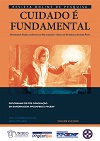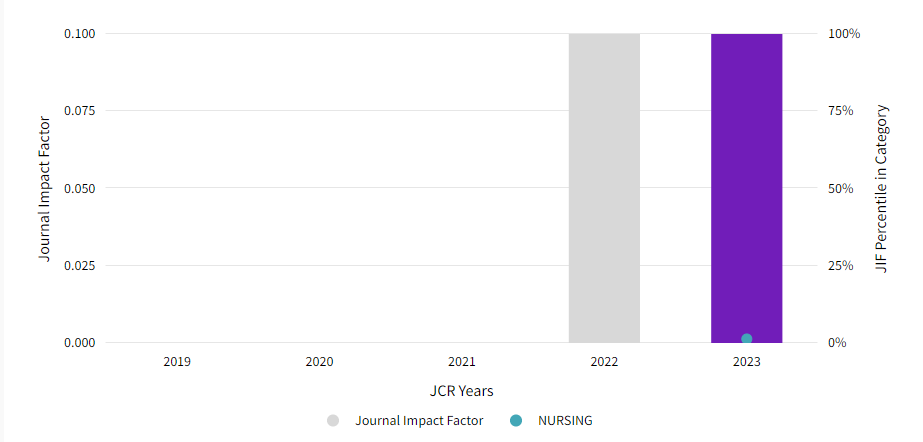Opioid-induced constipation in palliative care: state of the art / Constipação induzida por opióides em cuidado paliativo: o estado da arte
DOI:
https://doi.org/10.9789/2175-5361.rpcfo.v12.8008Palabras clave:
Morfina, Constipação, Cuidados paliativos, Enfermagem e saúde, NutriçãoResumen
OBJECTIVE: The study’s purpose has been to address the state of the art in investigations such as clinical trials, systematic reviews with meta-analysis and case studies, which report how to minimize opioid-induced constipation in patients undergoing palliative care. METHODS: This is an exploratory study through an integrative review of four databases addressing published articles from 2013 to 2017. RESULTS: A total of 117 publications were presented, which 17 presented the inclusion criteria. The studies describe the prevalence of constipation rates induced by the use of opioids. CONCLUSION: Although these drugs alleviate pain, the adverse reactions may generate discomfort and loss of the patient’s life quality. There are limited data on the treatment of constipation. It was observed that few authors mentioned diet as a helper on this situation, emphasizing the use of medications. Further studies should be encouraged aiming to find the balance between analgesia and reduction of adverse effects.
Descargas
Citas
Organização Mundial da Saúde. Alívio da dor do câncer. 2ª ed. Genebra: Organização Mundial da Saúde.[Internet]. 1996 [Citado 2018 Out. 10]. Available from:http://apps.who.int/iris/bitstream/10665/37896/1/9241544821.pdf
Caraceni A, Hanks G, Kaasa S, Bennett MI, Brunelli C, Cherny N, Haugen DF. Use of opioid analgesics in the treatment of cancer pain: evidence-based recommendations from the EAPC. The lancet oncology. 2012; 13(2):e58-e68. doi: https://doi.org/10.1016/S1470-2045(12)70040-2
Ripamonti CI, Santini D, Maranzano E, Berti M, Roila F. ESMO Guidelines Working Group. Management of cancer pain: ESMO clinical practice guidelines. Annals of oncology. 2012; 23(7):vii139-vii154.doi: https://doi.org/10.1093/annonc/mds233
Roberto A, Greco MT, Legramandi L, Galli F, Galli M, Corli O. A comparison between the administration of oral prolonged-release oxycodone-naloxone and transdermal fentanyl in patients with moderate-to-severe cancer pain: a propensity score analysis. Journal of Pain Research. 2017: 10(1):2123. doi: 10.2147/JPR.S141928
Gretton SK, Ross JR, Rutter D, Sato H, Droney JM, Welsh KI, Riley J. Plasma morphine and metabolite concentrations are associated with clinical effects of morphine in cancer patients. Journal of pain and symptom management. 2013; 45(4):670-680. doi.org/10.1016/j.jpainsymman.2012.03.015
Siemens W & Becker G. Methylnaltrexone for opioid-induced constipation: review and meta-analyses for objective plus subjective efficacy and safety outcomes. Therapeutics and clinical risk management. 2016; 12(1):401. doi: 10.2147/TCRM.S80749
Davis M & Gamier P. New options in constipation management. Current oncology reports. 2015; 17(12):55. doi:10.1007/s11912-015-0481-x
World Health Organization. National cancer control programmes: policies and managerial guidelines. 2rd ed. Geneve: OMS. 2002. [Citado 2018 Out. 18]. Available from: http://www.who.int/cancer/media/en/408.pdf
Huang Y, Li X, Zhu T, Lin J, Tao G. Efficacy and safety of ropivacaine addition to intrathecal morphine for pain management in intractable cancer. Mediators of inflammation, 2015; 2015(ID 439014):6.doi: http://dx.doi.org/10.1155/2015/439014
Cherny N, Ripamonti C, Pereira J, Davis C, Fallon M, McQuay H. Expert Working Group of the European Association of Palliative Care Network. Strategies to manage the adverse effects of oral morphine: an evidence-based report. Journal of Clinical Oncology. 2001; 19(9):2542-2554.doi: 10.1200/JCO.2001.19.9.2542
Rentz AM, Yu R, Müller-Lissner S, Leyendecker P. Validation of the Bowel Function Index to detect clinically meaningful changes in opioid-induced constipation. Journal of medical economics. 2009; 12(4):371-383. doi: 10.3111/13696990903430481
Bader S, Dürk T, Becker G. Methylnaltrexone for the treatment of opioid-induced constipation. Expert review of gastroenterology & hepatology. 2013; 7(1):13-26. Doi: http://dx.doi.org/10.1586/egh.12.63
Jarmuż A, Banaszek M, Storr M, Fichna J. The Role of MOP and DOP Receptors in Treatment of Diarrheapredominant Irritable Bowel Syndrome. Mini reviews in medicinal chemistry. 2016; 16(18):1462-1469. doi:10.2174/1389557516666160804165318
Clark K, Currow DC. Constipation in palliative care: what do we use as definitions and outcome measures? Journal of pain and symptom management. 2013; 45(4):753-762. doi: https://doi.org/10.1016/j.jpainsymman.2012.03.016
Yeomanson D, Chohan O, Mayer A. Paediatric palliative care: intravenous methylnaltrexone relieves constipation. BMJ supportive & palliative care. 2012; 3(1):103–105. doi: http://dx.doi.org/10.1136/bmjspcare-2012-000291
Dhingra L, Shuk E, Grossman B, Strada A, Wald E, Portenoy A, Portenoy R. A qualitative study to explore psychological distress and illness burden associated with opioid-induced constipation in cancer patients with advanced disease. Palliative medicine. 2013; 27(5): 447-456.doi:10.1177/0269216312450358
Neefjes EC, Van der Vorst MJ, Boddaert MS, Zuurmond WW, Van der Vliet HJ, Beeker A, Verheul HM. Clinical evaluation of the efficacy of methylnaltrexone in resolving constipation induced by different opioid subtypes combined with laboratory analysis of immunomodulatory and antiangiogenic effects of methylnaltrexone. BMC palliative care. 2014; 13(1):42.doi: https://doi.org/10.1186/1472-684X-13-42
Nalamachu SR, Pergolizzi J, Taylor R, Slatkin NE, Barrett AC, Yu J, Forbes WP. Efficacy and Tolerability of Subcutaneous Methylnaltrexone in Patients with Advanced Illness and Opioid‐Induced Constipation: A Responder Analysis of 2 Randomized, Placebo‐Controlled Trials. Pain Practice. 2015; 15(6):564-571.doi: 10.1111/papr.12218
Taylor D, Radbruch L, Revnic J, Torres LM, Ellershaw JE, Perelman M.A report on the long-term use of fentanyl pectin nasal spray in patients with recurrent breakthrough pain. Journal of pain and symptom management. 2014; 47(6):1001-1007. doi:http://dx.doi.org/10.1016/j.jpainsymman.2013.07.012
Kurita GP, Lundström S, Sjøgren P, Ekholm O, Christrup L, Davies A, Dale O. Renal function and symptoms/adverse effects in opioid‐treated patients with cancer. Acta Anaesthesiologica Scandinavica. 2015; 59(8):1049-1059.doi: 10.1111/aas.12521
Higuchi T, Shimada K., Cho Y, Minami K., Takeuchi K., Sakamoto A. Effectiveness of subarachnoid drug infusion for pediatric tumor‐related pain. Pediatrics International. 2016; 58(8):760-763.doi: 10.1111/ped.12952
Fernández UB, Trevigno BA, Rodríguez ZN, Palma TC, Cid BL. Use of opioids in palliative care of children with advanced cancer. Revista chilena de pediatria. 2016; 87(2):96-101.doi: 10.1016/j.rchipe.2015.10.006
Nosek K, Leppert W, Nosek H, Wordliczek J, Onichimowski D. A comparison of oral controlled-release morphine and oxycodone with transdermal formulations of buprenorphine and fentanyl in the treatment of severe pain in cancer patients. Drug Design, Development and Therapy. 2017; 11(1):2409. doi: 10.2147/DDDT.S141007
Mazumdar A, Mishra S, Bhatnagar S, Gupta D. Intravenous morphine can avoid distressing constipation associated with oral morphine: a retrospective analysis of our experience in 11 patients in the palliative care in-patient unit. American Journal of Hospice and Palliative Medicine.2008; 25(4):282-284. doi: 10.1177/1049909108315913
Candy B, Jones L, Larkin PJ, Vickerstaff V, Tookman A, Stone P. Laxatives for the management of constipation in people receiving palliative care. The Cochrane Library.[Internet] 2015 [cited 2017 out. 22] Available from: 10.1002/14651858.CD003448.pub4
Wiffen PJ, Derry S, Moore RA. Impact of morphine, fentanyl, oxycodone or codeine on patient consciousness, appetite and thirst when used to treat cancer pain. Cochrane Database Syst Rev, 5. 2014; (4). doi: 10.1002/14651858.CD011056
Ercole FF, Melo LSD, Alcoforado CLGC. Revisão integrativa versus revisão sistemática. Revista Mineira de Enfermagem. 2014; 18(1):9-12.doi: http://www.dx.doi.org/10.5935/1415-2762.20140001
Publicado
Cómo citar
Número
Sección
Licencia
Derechos de autor 2020 Revista de Pesquisa: Cuidado é Fundamental Online

Esta obra está bajo una licencia internacional Creative Commons Atribución-NoComercial-SinDerivadas 4.0.
TERMO DE TRANSFERÊNCIA DE DIREITOS AUTORAIS
Transfiro os direitos autorais deste artigo para a Revista de Pesquisa Cuidado é Fundamental - Online - RPCF, assim que ele for aceito para a devida publicação eletrônica. Os direitos de autor incluem o direito de reproduzir na íntegra ou em parte por qualquer meio, distribuir o referido artigo, incluindo figuras, fotografias, bem como as eventuais traduções. O autor pode ainda, imprimir e distribuir cópias do seu artigo, desde que mencione que os direitos pertencem a RPCF. Declaro que este manuscrito é original, não tendo sido submetido à publicação, na íntegra ou em partes para outros periódicos online ou não, assim cmmo em Anais de eventos científicos ou capítulos de livros.



























